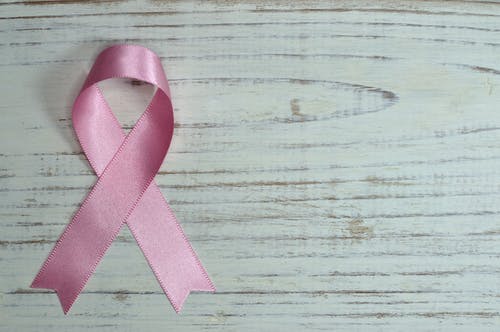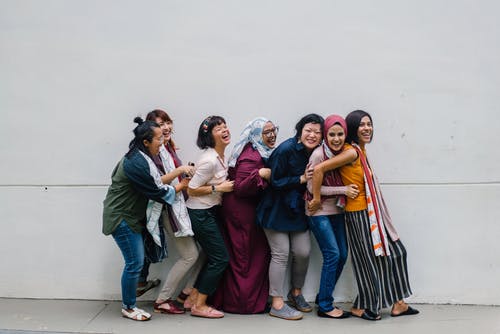
Breast Cancer – What You Need to Know
October is Breast Cancer Awareness month. But with a disease that has so many stereotypes and misinformation surrounding it, I thought it might be a good idea to cut through some of those false facts a little bit.
So, here’s what you really need to know…
Breast Cancer will affect 1 in 8 women in their lifetime
Breast Cancer is the second most common cancer in women in America, behind skin cancers. Breast Cancer makes up over 15% of all cancer cases in the US and a woman is diagnosed with Breast Cancer in America almost every two minutes.
These are very scary statistics, and only part of why self-check and early detection are so important. There are 3.5 million breast cancer survivors in America. More than half of all cases are detected while still in the localized stages of development, at which point the condition is VERY treatable and the five-year survival rate is over 99%.
Breast Cancer affects both Men and Women
Yes, it’s true. By now most of us are aware that breast cancer can affect both men and women. The reason why it is emphasized for women to self-check over men is down to simple statistics. While 1 in 8 women will develop some form of breast cancer over their lifetime, that number for men is closer to 1 in 1000. Men have less breast tissue than women. Fewer breast cells, fewer chances of any of them mutating. It’s like throwing a dart at a regular dartboard and then trying to throw that same dart at a bottle cap. Odds are you’re going to hit the board a lot more often than the bottle cap.

However, breast cancer in men has a much higher mortality rate than it does in women, primarily because it is so rare. Men are much less likely to self-check, and even less likely to seek medical attention if they ever did notice a lump.
Breast Cancer affects all Ages, Races, and Body Types.

Women over the age of 55 account for 2 out of 3 new diagnosies, but that means women under 55 account for 1 in 3.
Breast cancer affects all races but is more frequently diagnosed in Caucasian women, though that disparity could have more to do with societal factors than medical according to the World Health Organization.
Breast Cancer doesn’t care how many times a week you do to the gym, or if you drink Kale smoothies. While certain dietary and lifestyle habits can reduce your overall risk for most cancers, it is by no means a sure-fire preventative. Breast Cancer affects bodybuilders and the morbidly obese, marathon runners, and soccer moms.
Factors such as early/late menstrual onset, early/late menopause, number of pregnancies, age of pregnancies, and other medical conditions that affect hormone levels can play a role in your individual risk and should be discussed with a medical professional if you are concerned.

Breast Cancer is Hereditary
By now a lot of you have heard of the BRCA1 and BRCA2 genes. Women who have these inherited genes have a higher statistical risk of developing Breast Cancer. That is part of why Breast Cancer sometimes runs in families, and part of why your physician will ask about things like family history. But there is an important distinction to make here.
- Not all BRCA1/2 women will develop breast cancer
- Not all women with breast cancer have BRCA1/2
These genes, just like with everything else we’ve mentioned before, your age, race, gender, health, and hormone levels, are a factor. They are one part of a much larger puzzle, and to base your perceived risk on if you do or do not have the BRCA1/2 gene is a dangerous oversimplification.
Not all Breast Cancers are created equal
When it comes to Breast Cancer, like most cancers, the problem becomes this: Is it the turtle? Or is it the hare?

Not all cancers are created equal. Some cancers can metastasize in a matter of months, spreading from one part of the body to the next before you even have time to realize something is wrong. Others linger, developing as a nodule or a lump and then just… staying there, sometimes for years, without ever developing into anything more. It is physically impossible to tell one type of cancer from another externally.
This is why speaking to your doctor about your risk factors, and addressing any possible lumps as soon as possible is so very important. There is no way for a patient to know if that lump is a turtle or a hair, but laboratory testing can. Testing can provide treatment options best suited to your specific type. It can also help define your future risk and give you the information you need moving forward.
Self Breast Checks are the best method of early Breast Cancer detection
Once upon a time, mammograms were regularly recommended to women over 45 as part of an annual check-up. However, mammograms can still miss up to 10% of early detection cases, have a 7-12% chance of giving a false positive, and, for some women, maybe cost-prohibitive or not easily accessible. Whatever the reason, making breast checks a regular part of your monthly routine is a simple step that could end up saving you, big time.

Breast Cancer will affect 1 in 8 women in America during their lifetimes. But that doesn’t mean it has to take 1 in 8 women from our lives. Early detection, understanding your personal risk factors, and new treatments and therapies mean that, though we can’t yet prevent breast cancer, the ranks of its survivors will grow stronger and more resilient with each new victory.
*For more information, check out the National Breast Cancer Foundation *
Check out this and more original content available every week at TheNerdyNanny.com by subscribing to us on Facebook or Instagram.
You can also check out Eve Daniels, author of The Nerdy Nanny books, on YouTube where she gives writing and academic advice as well as updating you on all of her latest and upcoming projects.

